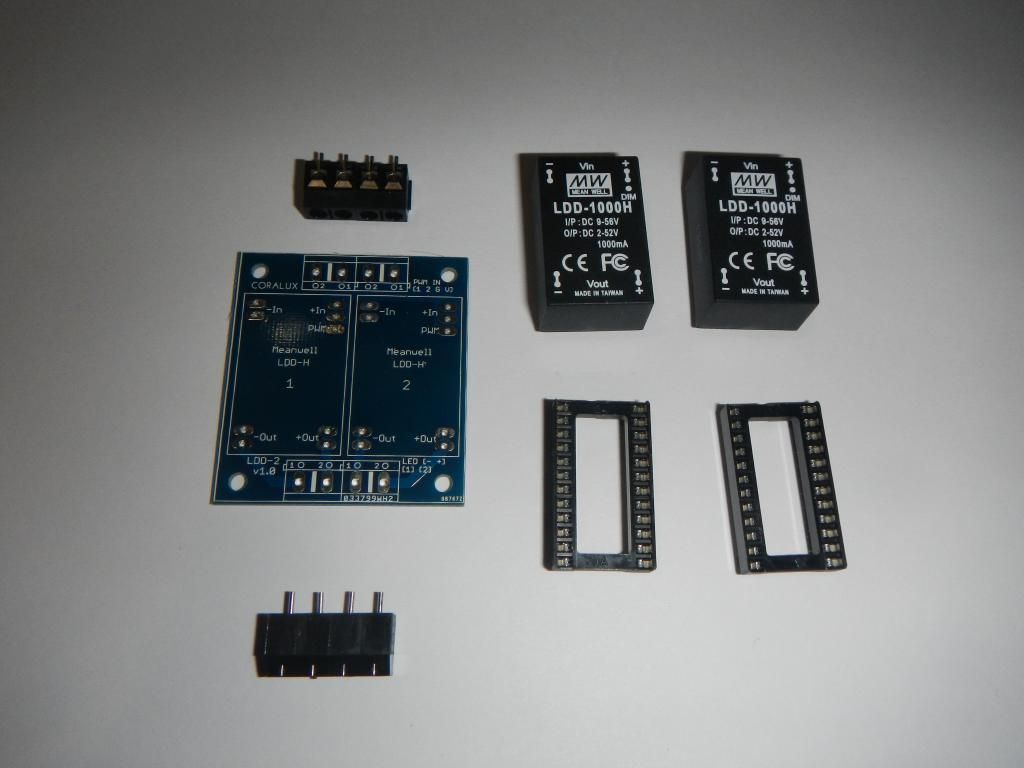jrpark22000
Registered Member
Quote:
Originally Posted by C5flyboy View Post
From my research that I did for my build (currently awaiting parts to come to start!) If you are using the Apex as your controller you have to use the D series if you are going with the meanwell drivers which are apparently pretty awesome… from what I found the analogue drivers do not operate using the PWM, only the CCR…Anyone with better and possibly more accurate info please chime in here and correct me where I'm wrong but this is what I came up with from my research…I also found a a lot of folks actually made their own drivers from scratch….
Agreed the Apex puts out a 0-10V analog signal from the VDM ports. I’ve also read the reviews of both meanwell and inventronics, both are highly recommended. You research matches what I’ve read, anything that has an analog trigger input uses CCR method to dim the LEDs. I’ve looked at the PWM driver components. I’ve again ran into the same issue, PWM drivers use a PWM input trigger.
Quote:
Originally Posted by renisel View Post
Could you clarify your rationale for converting a perfectly good analog signal into a PWM signal? What phase shift are you worried about?
I’m not looking to convert signals, I’m looking to maintain the analog trigger but utilize PWM dimming method.
The phase shift is explained in the OP links in detail. There are 2 methods to dim LEDS, by reducing current(CCR) or by rapidly turning the LED on and off using a duty cycle (PWM.) By reducing the current to dim the LED the light spectrum is changed by an unknown value. Using PWM the current is maintained across the LED maintaining the rated and known spectrum.
1) I won’t be running the LEDs at 100%.
2) I use an Apex and would like to control the DIY LEDs with it.
3) I’m augmenting my existing AI setup which I have spectral analysis for and looking for specific frequencies to fill out the my spectrum. I am dimming my AIs and have yet to find what type of dimming they use, although I would guess CCR based on my research. I’ve only read of one manufacturer to use PWM dimming. With my research the variances between each LED, mixing royal blue and blue LEDS, and their density over my tank I believe CCR dimming the AIs for me would still provide a similar spectral analysis as Dr. Sanjay Joshi published.
http://www.advancedaquarist.com/2012/3/aafeature
Each manufacturer produces LEDs with different nm range and even within a single manufacturer a given lot of LEDs properties will vary. Add to that 2 more factors, water shift and CCR dimming driver shift. Water shift can be calculated roughly. CCR Driver shift on the other hand varies per LED color type, manufacturer, lot, amperage and age. The only true way to know what I’m giving the coral is to measure the spectrum under the water level, which isn’t an option for numerous reasons. No manufacturers or any studies I’ve read measure LEDs spectrum at anything less than full rated power level, including Dr. Sanjay. An analog triggered PWM LED driver would solve for some of the variables, let me use my Apex, and make it practical to estimate spectral range at a given water depth.
My current options are to not use my Apex, buy a few LEDs for every manufacturer and send them off for testing, or use CCR and guess at what nm ranges I'm providing.


